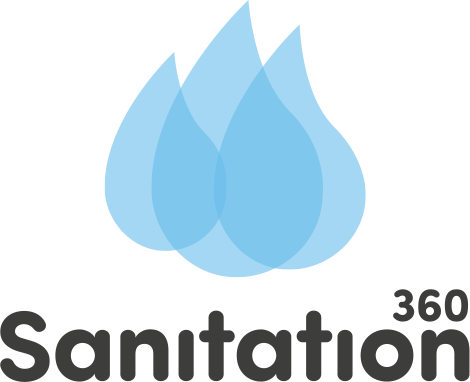We developed a simple process to recycle urine. Here’s how it’s done in 10 Steps
Every year on November 19, the United Nations celebrates one of public health’s greatest inventions – the toilet. Those who are fortunate enough to have access to one spend more than a year of their lives on it, yet millions of people worldwide cannot use one and many have never even seen one.
Invented back in 1775, the flush toilet has changed surprisingly little in design. In fact, a toilet is nothing more than a seat (or a pan) connected to a pipe with a bend. If this pipe is further connected to a system of sewers that carries away excreta to a centralised treatment plant, then wastewater can safely be discharged into the environment.
But worldwide, 80% of the wastewater produced receives no treatment, which causes environmental harm and spreads diseases. Although wastewater contains nutrients when it’s generated at households, the nutrients get diluted when flushed away. This makes it difficult to remove them even when they do reach treatment plants. Instead, they spread in the environment as pollutants.
A rethink of sanitation must start at the toilet itself. One way to manage excreta differently is to collect them separately. A urine-diverting toilet does exactly what its name suggests – it separates the urine from the faeces. These toilets can be designed to look exactly like conventional toilets by concealing a trap that diverts the urine.
We developed a simple process that could encourage people to recycle urine. In our process, freshly collected urine is first made alkaline (high pH) to prevent the reaction that produces ammonia and urine’s typical pungent smell. Then, by evaporating water, urine is reduced into a dry powder that captures all its nutrients.
How to safely recycle urine
When urine is collected at home, the majority of the nutrients present in wastewater can be kept away from wastewater treatment plants.
The collected urine can benefit the household too. To take advantage of the nutrients passed in urine, it can be recycled as fertiliser for agriculture. Previous research has shown that urine can effectively be used as an alternative to conventional fertiliser. In fact, urine produced by people worldwide contains enough nutrients to fertilise three-quarters of the food we eat.
By following a few simple steps, anyone can safely dry urine to produce a fertiliser. Here’s what you will need:
- Something to collect urine – a urinal, a urine-diverting toilet, or a clean bucket.
- A small container – in the image below, we used an off-the-shelf plastic box with dimensions 60 x 40 x 20 cm.
- Alkaline material that has a pH of at least 10, such as ash produced from burning wood or slaked lime produced by converting limestone. Pick something that can be applied in agriculture.
- A fan that you’ll attach to the container and connect to electricity or a battery.
Then you need to follow the following 10 steps.
- Fill the container with the alkaline material. If you choose slaked lime (about US$1 per kg), add about 3kg every month for a household of four.
- Connect your urine-separating toilet to the container using a short pipe with a diameter of 75mm and gradient of at least 1%.
- Attach an exhaust pipe to the container to carry humid air out of the bathroom.
- Urinate in the toilet as usual or pour freshly collected urine immediately into the container.
- Switch on the fan.
- Repeat the process every day for the entire month.
- At the month’s end, you’ll collect a dry powder containing approximately 9% nitrogen, 1% phosphorous, and 4% potassium. Store this for a couple of days at a temperature above 20°C. This will ensure that the product is safe to handle and apply at the household level according to the World Health Organisation’s guidelines.
- Apply it as fertiliser according to your plants’ needs.
- To restart the process, replace the container with fresh alkaline material.
- Spread the urine wisdom – when you see benefits, encourage others to try drying their own urine.
Can this be done at a larger scale?
That’s what we plan on doing in South Africa next year. Along with several other stakeholders we’re leading an initiative that aims to retrofit 1,000 urine separating toilets with the urine drying technology in the city of Durban in the country’s east coast. We hope that this will enable people to convert their own urine into a solid fertiliser that can used to grow food.
A large motivation for the initiative came from the current COVID-19 situation in South Africa, which exposed many vulnerabilities. These include unemployment and food insecurity.
Recycling urine collected from these toilets in small-scale horticulture can make a big difference to local food security. In turn, it can also improve the local environment by promoting the wider use of toilets.
Durban has been at the forefront of the urine recycling movement worldwide – the city already has nearly 80,000 urine-separating toilets and over 1,000 community ablution blocks that have male urinals. These toilets serve approximately 450,000 people. Drying the urine collected from these toilets can be the next chapter in the city’s ongoing efforts to embrace new sanitation systems.
Authors: Prithvi Simha, PhD Candidate in Environmental Engineering, Swedish University of Agricultural Sciences; Christopher Buckley, Professor and Co-Head of the Pollution Research Group, University of KwaZulu-Natal, and Jenna Senecal, Postdoctoral Researcher in Environmental Engineering, Swedish University of Agricultural Sciences
This article is republished from The Conversation under a Creative Commons license. Read the original article.




